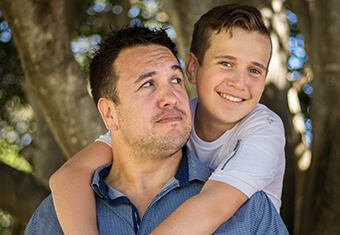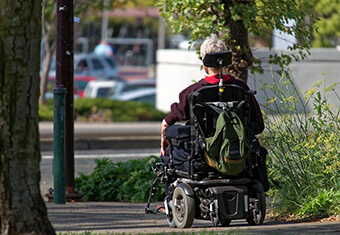Some trusts for disabled people are able to get special tax treatment from HMRC. They are more usually referred to as ‘vulnerable beneficiary trusts’.
For the trust to qualify as a vulnerable beneficiary trust, various conditions will apply.
Vulnerable beneficiary trusts for children are often set up in a parent’s will, but they are able to set up in lifetime as well.
Who qualifies for a vulnerable beneficiary trust?
The beneficiary of such a trust must be a disabled person. For this purpose a disabled person is one who:
- by reason of ‘mental disorder’, within the meaning of the Mental Health Act 1983, is incapable of administering their property or managing their affairs, or
- qualifies under a ‘benefits’ test, i.e.
- is in receipt of an increased allowance, or
- is in receipt of attendance allowance, or
- is in receipt of the care component of disability living allowance at the highest or middle rate, or the mobility component of disability living allowance at the higher rate, or
- is in receipt of the personal independence payment, or
- is in receipt of an armed forced independent payment.
What classes as a ‘mental disorder’?
It should be noted that ‘mental disorder’ referred to above also has conditions attached to it. It is understood that HMRC will accept certain conditions as a ‘mental disorder’ that enable a person to qualify, and as a result of the condition they are incapable of managing their affairs. The accepted conditions are as follows:
- Alzheimer’s or other forms of dementia;
- bipolar disorder, schizophrenia, depression, or other mental illness;
- Autistic Spectrum Disorder (sometimes described as a persuasive developmental disorder);
- a learning disability, such as Down’s Syndrome.
Some brain injuries are not seen as a mental disorder if they only have physical consequences. However, if the brain injury has caused a psychological, cognitive or behavioural disorder, then these will generally be accepted as a ‘mental disorder’.
What about other beneficiaries?
If there are beneficiaries in the trust who are not vulnerable then the assets and income for the vulnerable beneficiary must be identified and kept separate. They must only be used for that person. It is only that part of the trust that would be entitled to special tax treatment.
How does the special tax treatment work?
If the trustees of the vulnerable beneficiary trust wish to claim the special tax treatment for income tax and capital gains tax purposes, they will have to complete the ‘Vulnerable Person Election Form VPE1’. A separate form will be required for each vulnerable beneficiary. The trustees and the beneficiary must both sign the form.
The election for special tax treatment is made for a tax year or part of a tax year (for example if the beneficiary has just become a vulnerable person). It has to be made within 12 months of the normal filing date for the trust tax return. It will come to an end if the beneficiary ceases to be vulnerable; the trust is terminated; or the beneficiary dies. The trustees would be required to report these circumstances to HMRC.
Income tax
For income tax purposes, the trustees are entitled to a deduction. They need to work out what tax they would be paying on the income of the trust if there was no vulnerable person. They then work out what tax the vulnerable person would have paid if the trust income had been paid directly to them as an individual. The difference between the two figures can then be claimed as a deduction from the income tax liability of the trust. There are variations on computing the relief from income tax and from capital gains tax depending on whether the beneficiary is UK resident or non-resident. Competent professional advice from a qualified advisor should be sought to assist in carrying out the various computations.
Capital gains tax
There are also special rules for capital gains tax. This is usually paid when assets are sold, given away, exchanged or transferred in some other way and their value has increased since they were put into the trust. There is an annual exempt amount allowed for the trustees to set against capital gains in the trust. As with the income tax calculations for these trusts, there is a similar calculation done for claiming a deduction in capital gains tax. The trustees work out what they would pay without any deduction. They then work out what the vulnerable person would pay if the gains had come directly to him. They are allowed to claim the difference as a reduction on what the trustees would have to pay by filling in a form.
Inheritance tax
For inheritance tax purposes there are also some special tax treatments. There is no charge if the person who sets up the trust survives for seven years from the date they set it up and there is no charge on transfers made out of a trust to the vulnerable beneficiary. It should also be noted that trusts usually have a ten-yearly inheritance tax charge, but trusts with vulnerable beneficiaries are exempt.
For inheritance tax purposes only, a ‘disabled person’ also includes a person who settles their own property into a trust for themselves at a time when they have a condition that it is reasonable to expect will lead to them becoming incapable of administering their property or managing their affairs (this can often happen for someone who may have an acquired brain injury as a result of an accident).
Get advice
If a vulnerable beneficiary trust is to be contemplated, then it is recommended that an advisor who is skilled in the law of taxation and trusts, such as a TEP, is engaged as the tax treatment, in particular, is fraught with technical difficulty.
- See the article ‘How can I make sure my disabled child is provided for when I die?‘
Patricia Wass TEP
 UK
UK  Canada
Canada




